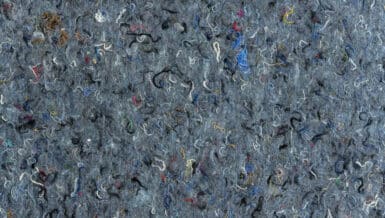Precision Agriculture: The Digital Revolution
Precision agriculture is at the forefront of modern farming practices, and agricultural textile fabrics are integral to its success. These fabrics serve as the foundation for smart agriculture technologies, enabling the creation of geotextile-based sensors and monitoring systems. These systems allow farmers to gather real-time data on soil moisture levels, temperature, and nutrient content, helping them make informed decisions about irrigation, fertilization, and pest control.
Shade Nets and Greenhouse Fabrics
Shade nets and greenhouse fabrics have long been essential crop protection and management tools. However, recent innovations in these textiles have increased their effectiveness. Advanced shade nets now offer precise light control, allowing farmers to optimize light exposure for specific crops and growth stages. Additionally, greenhouse fabrics with improved insulation properties help regulate temperature and humidity, creating optimal microclimates for plant growth.
Anti-UV and Anti-Insect Nets
Protection against UV radiation and insect pests is critical in agriculture. Anti-UV and anti-insect nets made from agricultural textile fabrics provide an effective solution. These textiles shield crops from harmful UV rays and act as barriers against invasive insects. Innovative coatings and treatments enhance the durability and performance of these nets, ensuring prolonged use and minimizing environmental impact.
Soil Erosion Control and Geotextiles
Soil erosion is a significant challenge in agriculture, leading to loss of fertile topsoil and environmental degradation. Geotextiles, a subset of agricultural textile fabrics, offer innovative solutions for soil erosion control. They stabilize embankments, reinforce slopes, and protect against field soil erosion. These fabrics are designed for durability and longevity, making them a sustainable choice for long-term erosion management.
Weed Control Fabrics
Weed control is a perennial issue for farmers, impacting crop yield and quality. Agricultural textile fabrics designed for weed control are experiencing significant innovations. These fabrics not only act as physical barriers to weed growth but can also be engineered to release herbicides in a controlled manner, reducing the need for chemical interventions. This approach enhances crop health while minimizing environmental contamination.
Crop Protection and Covering Systems
Crop protection and covering systems safeguard crops from adverse weather conditions, pests, and diseases. Innovations in agricultural textile fabrics have led to the development of lightweight yet durable covering materials. These fabrics offer weather resistance, UV protection, and breathability, ensuring optimal growing conditions for crops.
Nonwoven Agricultural Textiles
Nonwoven agricultural textiles are making significant strides in the industry. These fabrics are used in various applications, such as crop covers, mulching, and weed control. Innovations in nonwoven technology have resulted in fabrics with improved strength, water retention capabilities, and biodegradability. These textiles promote sustainable farming practices by reducing the need for synthetic materials.
Smart Irrigation and Water Management
Water scarcity is a growing concern in agriculture, making efficient water management essential. Agricultural textile fabrics are at the forefront of smart irrigation and water management innovations. These fabrics can be integrated with sensors and actuators to create intelligent irrigation systems. They enable precise control of water distribution based on real-time data, reducing water wastage and optimizing irrigation efficiency.
Biodegradable and Eco-friendly Textiles
As sustainability becomes a central focus in agriculture, biodegradable and eco-friendly agricultural textile fabrics are gaining prominence. These textiles are designed to decompose naturally after their useful life, reducing environmental impact. Innovations in biodegradable materials, such as natural fibers and bioplastics, offer sustainable alternatives to conventional synthetic fabrics.
Vertical Farming and Aeroponics
Vertical farming and aeroponics are revolutionizing agriculture by maximizing space and resource efficiency. Agricultural textile fabrics play a crucial role in these systems. They serve as plant growth substrates, providing support and aeration for root development. Innovations in fabric design are optimizing nutrient and water retention, contributing to the success of vertical farming and aeroponics as viable alternatives to traditional agriculture.
Conclusion
The world of agriculture is undergoing a profound transformation, driven by technological advancements and a growing emphasis on sustainability. Agricultural textile fabrics are at the forefront of this revolution, with innovations that range from precision agriculture solutions to biodegradable materials. These fabrics enhance crop yield and quality and promote eco-friendly farming practices and resource efficiency.
As technical textile professionals, staying abreast of these innovations and applications in agricultural textiles is imperative. They represent a dynamic and promising field where science, engineering, and sustainability converge to shape the future of agriculture. In this ever-evolving landscape, agricultural textile fabrics are not just materials; they are the foundation upon which the future of farming is being built, one innovation at a time.
Find out more about Agricultural textiles












